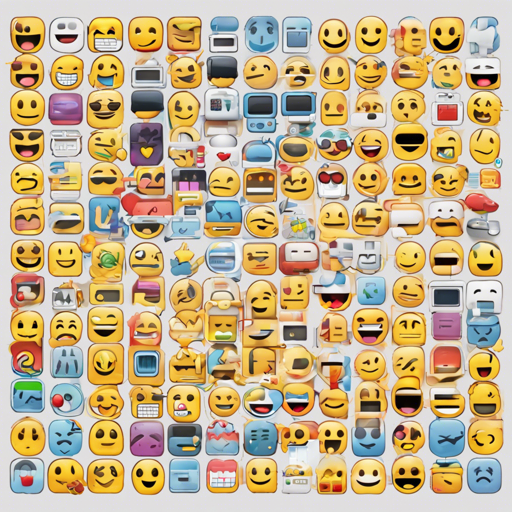Welcome to the world of Emojich! If you’ve ever wanted to transform words into expressive emoji-style images, you’ve come to the right place. In this tutorial, we’ll guide you on how to leverage the power of the Emojich model, developed by Sber AI, to create delightful emojis from text.
Understanding Emojich
Emojich is a model with 1.3 billion parameters, inspired by the creative prowess of Malevich. Its primary task is text-to-image generation, which means it can take your written words and convert them into visually appealing emojis. The model was trained using a robust dataset of 120 million text-image pairs and 2749 specific text-emoji pairs.
Setting Up Emojich
- First, make sure you have access to a GPU, preferably an NVIDIA A100, to handle the model’s computational demands.
- Next, visit the full training code provided on Kaggle to get started.
- Install any required libraries such as TensorFlow or PyTorch, depending on the model implementation.
How the Model Works
Imagine trying to paint a picture using instructions from a friend. They describe what they want, and based on their guidance, you create the artwork. That’s similar to how Emojich functions—it interprets your text and produces a corresponding visual emoji. Here’s a brief breakdown of its processes:
- **Input Text**: You provide the model with a line of text.
- **Model Interpretation**: Emojich processes it using its vast parameters, akin to an artist analyzing a set of instructions.
- **Output Emoji**: The model then generates an emoji based on its understanding, creating a unique visual representation.
Examples of Generated Emojis
Some impressive emojis can result from the Emojich model. Keep in mind that results can improve with more attempts—approximately 512 attempts are suggested for optimal output. Each generated emoji is a one-of-a-kind creation with the ability to evoke emotions through art.
generated_emoji = emojich.generate("Happy day at the park")Troubleshooting Tips
If you run into issues while using the Emojich model, consider the following troubleshooting ideas:
- Check for compatibility issues with your GPU or libraries.
- Make sure your text input is clear and concise for better results.
- If the model generates similar emojis, consider adjusting the temperature or other hyperparameters.
- For more insights, updates, or to collaborate on AI development projects, stay connected with fxis.ai.
Conclusion
At fxis.ai, we believe that such advancements are crucial for the future of AI, as they enable more comprehensive and effective solutions. Our team is continually exploring new methodologies to push the envelope in artificial intelligence, ensuring that our clients benefit from the latest technological innovations.
Now go ahead, unleash your creativity, and start generating your own emojis with Emojich!

